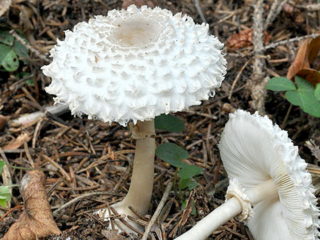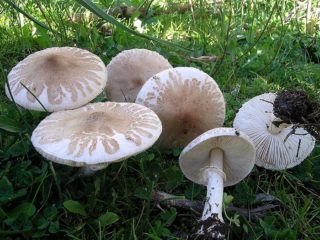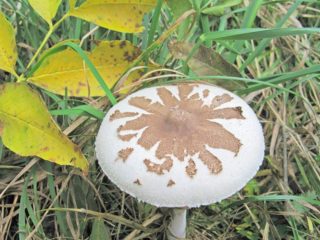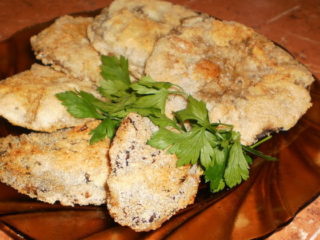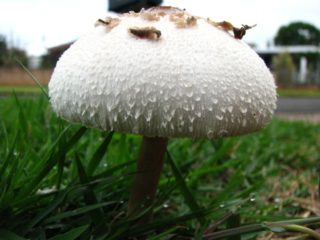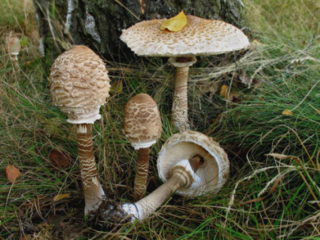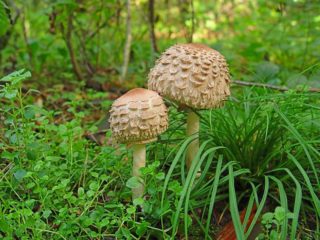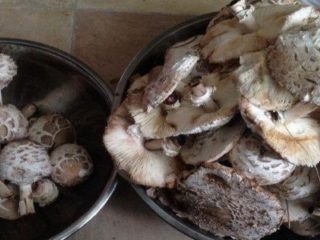Content
The white umbrella mushroom is a representative of the Macrolepiota genus, the Champignon family. A species with a long fruiting period. Edible, with an average nutritional value, belongs to the third category. The mushroom is called the white umbrella (Macrolepiota excoriata), and also field or meadow.
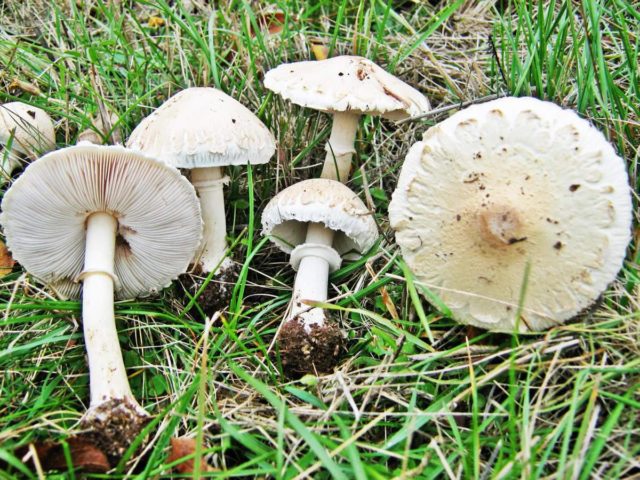
Collect white umbrellas in an open area among low grass
Where does the meadow umbrella mushroom grow?
The representative prefers humus soil, rich in humus, in fertile areas it can reach large sizes. Distributed in the temperate, temperate continental climatic zone, the main accumulation of the species is in Siberia, Altai Territory, the Far East, the Urals, found in the Central regions.
Grows in compact groups or singly on pastures, meadows, along the edges of arable land in the steppe. Mushrooms are found on the edges of coniferous and mixed massifs, glades, among low grass in plantations. Fruiting is stable, every year the white umbrella gives a good harvest. They start picking mushrooms in early June and finish in October.
What does an umbrella mushroom look like?
The species forms large fruiting bodies, adult specimens grow up to 13 cm with a cap size of 12 cm in diameter. The color is white or beige.
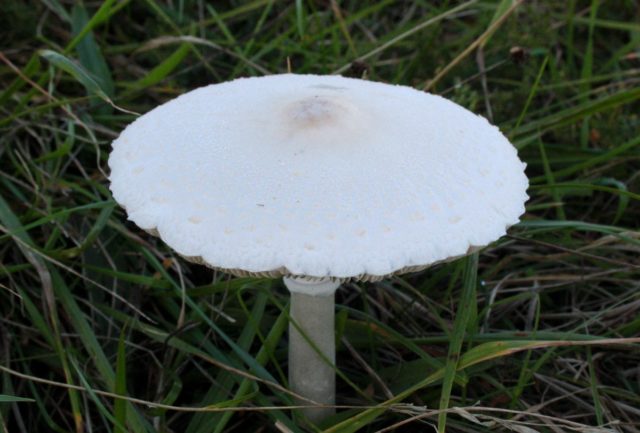
View with a large white fruiting body
Hat:
- at the beginning of growth, elongated, ovoid. Velum is private, tightly fused with a leg;
- during the growing season, the cap opens, becomes domed, then prostrate;
- when it breaks, the veil leaves a clearly defined, white wide movable ring and flocculent fragments along the edge of the cap;
- on the surface in the central part there is a wide cone-shaped bulge with a smooth light brown coating;
- a protective film below the tubercle, finely flaked, when the tissue breaks, the coating separates from the surface, becomes like flakes;
- the flesh is thick, rather dense white, does not change color at the site of damage;
- the hymenophore is lamellar, well developed, the plates are free with even ends, frequent. Located along the edge of the cap, reaching the middle;
- the color is white, in adult specimens it is cream with brownish spots.
Leg:
- cylindrical, up to 1.3 cm wide, 8-12 cm high;
- central hollow, thickened at the base;
- the structure is longitudinally fibrous, rigid;
- the surface is smooth, up to the ring - white, below - with a yellow or brown tint;
- when cut or pressed, it turns light brown.
Edible or not white umbrella mushroom
Edible mushroom with good gastronomic value. The species is included in the III classification group in terms of nutritional value. Fruit bodies are universal in processing.
False doubles
Edible counterparts include a variegated umbrella (macrolepiota procera).
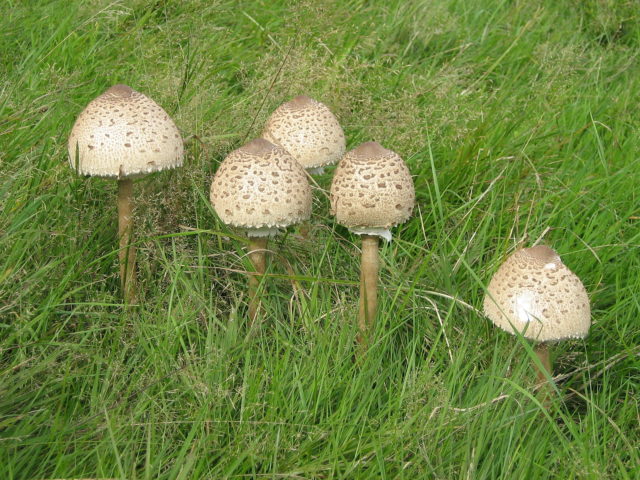
The color of the cap is beige with large dark scales.
Fruit bodies are large, the surface of the cap is covered with detachable scales. The color is white-gray or brown. The leg is brown, the surface is finely scaly. Abundant fruiting - from July to frost.
Conrad's umbrella mushroom is medium-sized, edible.
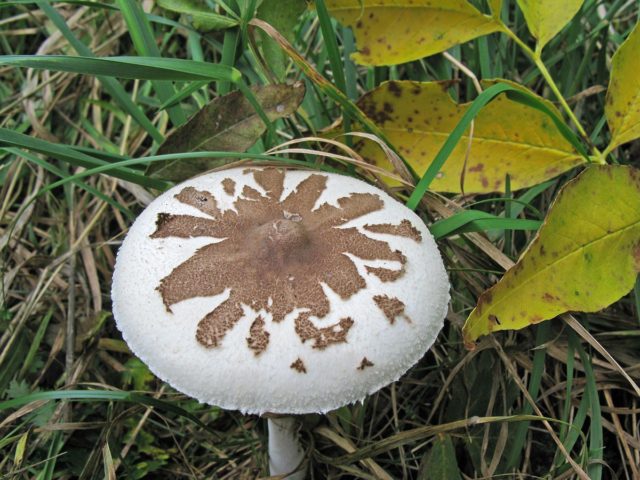
In adult mushrooms, the remains of the film are only in the center.
At the beginning of growth, it is almost impossible to distinguish from a field umbrella. In adult specimens, the surface of the cap turns brown, the film breaks, and long cracks form. There is no scaly coating, the structure is dry, smooth.
Poisonous Lepiota is a highly toxic autumn mushroom.
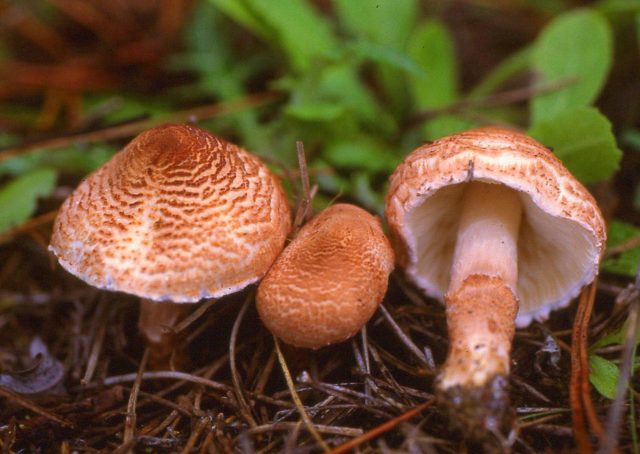
Lepiota poisonous with an indistinct bulge in the center
Color - from pink to brick, small in size, the diameter of the cap is within 6 cm.The surface is covered with tight-fitting small scales, forming radial stripes. The ring is weakly expressed, in adult mushrooms it may be absent. When broken, the pulp turns red. At the beginning of the growing season, the smell is pleasant, then it resembles kerosene or gasoline.
Collection rules and use
For many seasons, the species forms fruiting bodies in the same place. They do not harvest in an ecologically unfavorable zone, do not take overripe specimens. Young mushrooms and adult caps are suitable for thermal processing. The hard legs are dried, ground into powder, and used as seasonings. Fruits are suitable for winter harvesting.
Conclusion
Umbrella mushroom is an edible species with good gastronomic characteristics, versatile in processing. Fruiting from July, including October, in open areas of woodlands, fields, meadows, prefers fertile humus soils. Forms dense small colonies or grows singly.
